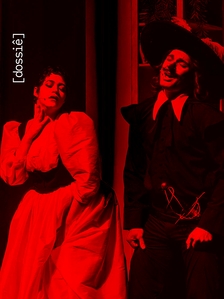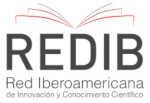Analysis of stage costumes
methodologies in Brazilian studies
DOI:
https://doi.org/10.26563/dobras.v18i43.1877Keywords:
stage costumes, analysis methodologies, Brazilian studies, performing artsAbstract
This article is part of a result from post-doctoral research and sought to carry out, through a research of secondary data, in the thesis databases of Brazilian universities, studies (theses and dissertations) developed based on analyses of images of costumes used in theatrical scenic works. Data such as the research techniques used to read the meanings of the costumes, which include the costumes as a relevant part of the characterization and scenic fabric and their respective analyses. The theoretical background of the article is interdisciplinary and encompasses authors from the Human Sciences, Arts and Applied Social Sciences. The objective of this study was to identify and compose an inventory of the research methodologies used in these analyses, to assist future researchers in new research and studies that deal with this topic, with the purpose of understanding the symbolic importance of the stage costume for the composition of scenic images. and his poetics. And thus, collaborate with epistemological discussions in the scientific field concerning the Arts.
Downloads
References
ABRANTES, Samuel. Heróis e bufões: o figurino encena. Rio de Janeiro: Agora da Ilha, 2001.
BAENA, Graziela R. Mestre Nato em narrativas costuradas: estudo de princípios de criação dos figurinos em “O auto da barca do inferno” e “A-mor-te-mor”. 2012.
Dissertação (Mestrado) – Universidade Federal do Pará, Belém, 2012. Disponível em: chrome-extension://efaidnbmnnnibpcajpcglclefindmkaj/https://repositorio.ufpa.br/bitstream/2011/7741/1/Dissertacao_MestreNatoNarrativas.pdf Acesso em 30 jul. 2024.
BAUER, Martin; GASKELL, George. Pesquisa qualitativa com texto, imagem e som. Rio de Janeiro: Vozes, 2002.
BOEIRA, Maria Celina G. R. Os potenciais narrativos do bordado no traje de cena. 2018.
Dissertação (Mestrado) - Universidade de São Paulo, São Paulo, 2018. Disponível em: https://doi.org/10.11606/D.27.2018.tde-27122018-105257 Acesso em: 30 jul. 2024. DOI: https://doi.org/10.11606/D.27.2018.tde-27122018-105257
BOGDAN, Robert; BIKLEN, Sari. Investigação qualitativa em educação: uma introdução à teoria e aos métodos. Porto: Porto Editora, 1994.
COSTA, Carla A. da. Os Figurinos do Personagem Negro: A Projeção do Vestuário Cênico Na Cena Contemporânea. 2019. Dissertação (Mestrado) – Universidade Federal do Estado do Rio de Janeiro - UNIRIO, Rio de Janeiro, 2019. Disponível em: http://hdl.handle.net/unirio/13297 Acesso em 30 jul. 2024.
DONDIS, Donis A. Sintaxe da Linguagem Visual. São Paulo: Martins Fontes, 1997.
ECO, Umberto. Apocalípticos e integrados. 6 ed. São Paulo: Perspectiva, 1970.
KOUDELA, Ingrid. D.; JUNIOR, José Simões de A. Léxico de pedagogia do teatro. São Paulo: Perspectiva, 2015.
MACIEL, Eduardo; MIRANDA, Ana Paula C. DNA da Imagem de Moda. Anais do V Colóquio de Moda, ABEPEM. Recife, 2009. Disponível em: https://www.coloquiomoda.com.br/anais/Coloquio%20de%20Moda%20-%202009/Consumo-de-Moda/. Acesso em 24 jun. 2024.
NORONHA, Dayse; MOMESSO, Ana Carolina. Bibliométrie ou Bibliometrics: o que há por trás de um termo? Perspectivas em Ciência da Informação. v.22, n.2, p.118-124, abr./jun. 2017. Disponível em: chrome-extension://efaidnbmnnnibpcajpcglclefindmkaj/https://www.scielo.br/j/pci/a/X4xTbMZNdVXV3MNsYFRnSbQ/?format=pdf Acesso em 30 jul. 2024. DOI: https://doi.org/10.1590/1981-5344/2831
ORTIZ, Sergio Ricardo L. Do espaço vazio ao círculo aberto: rumo à cenografia e indumentária sagradas de Peter Brook. 2013. Dissertação (Mestrado) - Universidade de São Paulo, São Paulo, 2013. Disponível em: https://doi.org/10.11606/D.27.2013.tde-10022014-110825 Acesso em 30 jul. 2024. DOI: https://doi.org/10.11606/D.27.2013.tde-10022014-110825
PAVIS, Patrice. A análise dos espetáculos: teatro, mímica, dança, teatro-dança, cinema.

Downloads
Published
How to Cite
Issue
Section
License
Copyright (c) 2025 Luciana Crivellari Dulci

This work is licensed under a Creative Commons Attribution-NonCommercial-ShareAlike 4.0 International License.
The copyrights of the works published in this journal belong to the author, and dObra[s] holds the rights of first publication. Due to their publication in this open access journal, any work here is free to use, with its own attributions, in educational and non-commercial applications.









